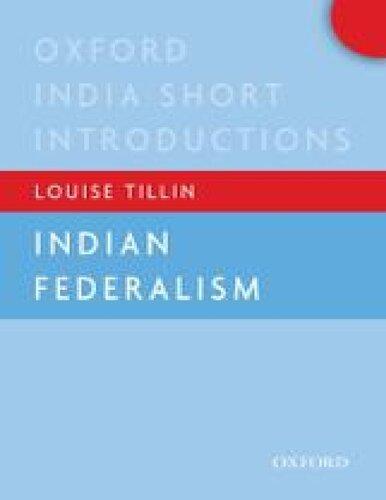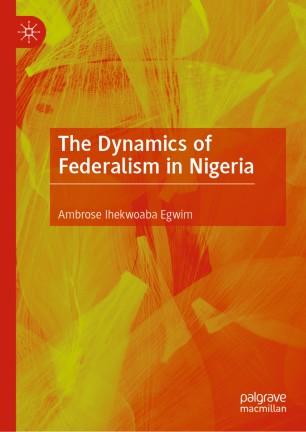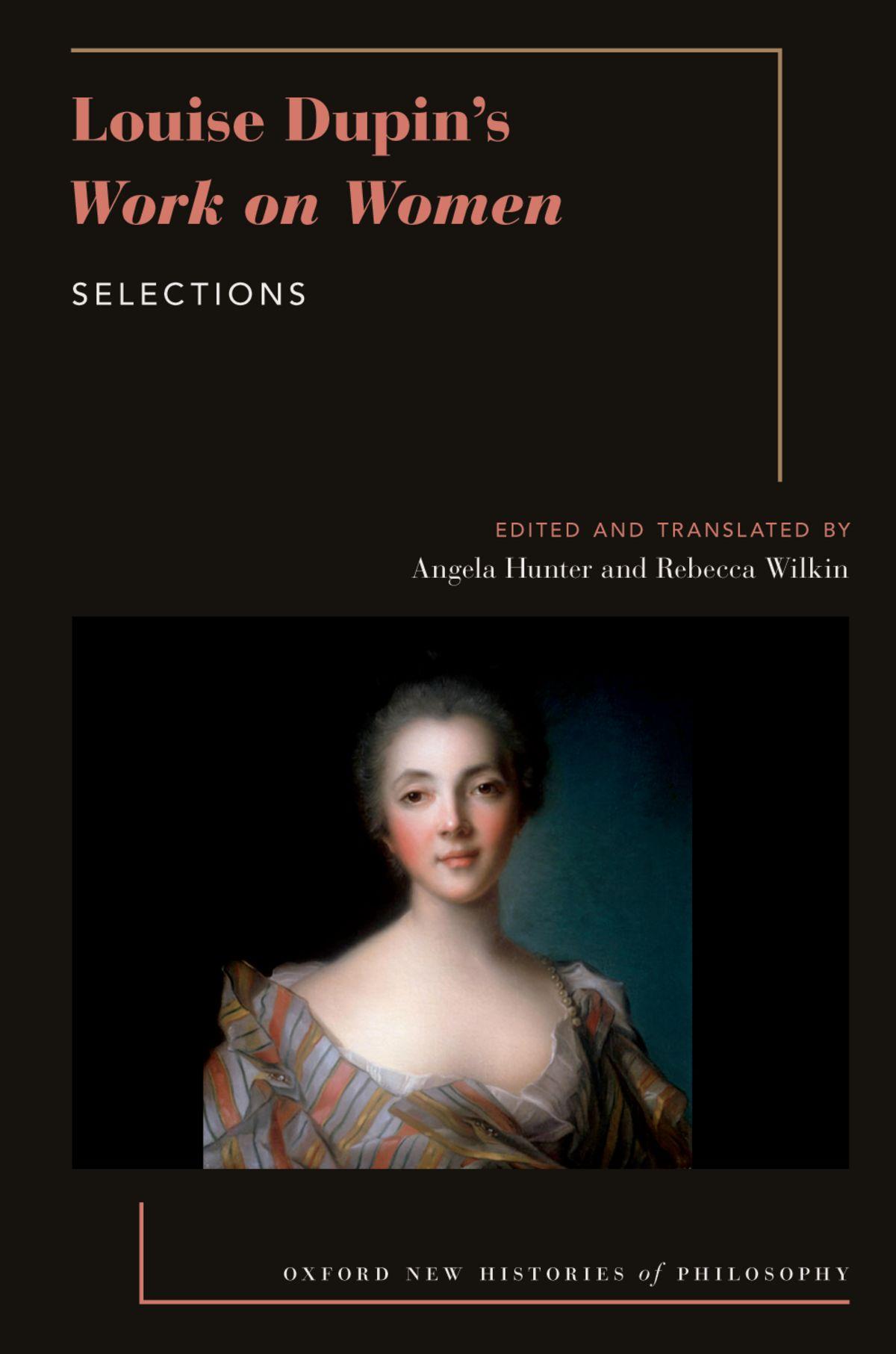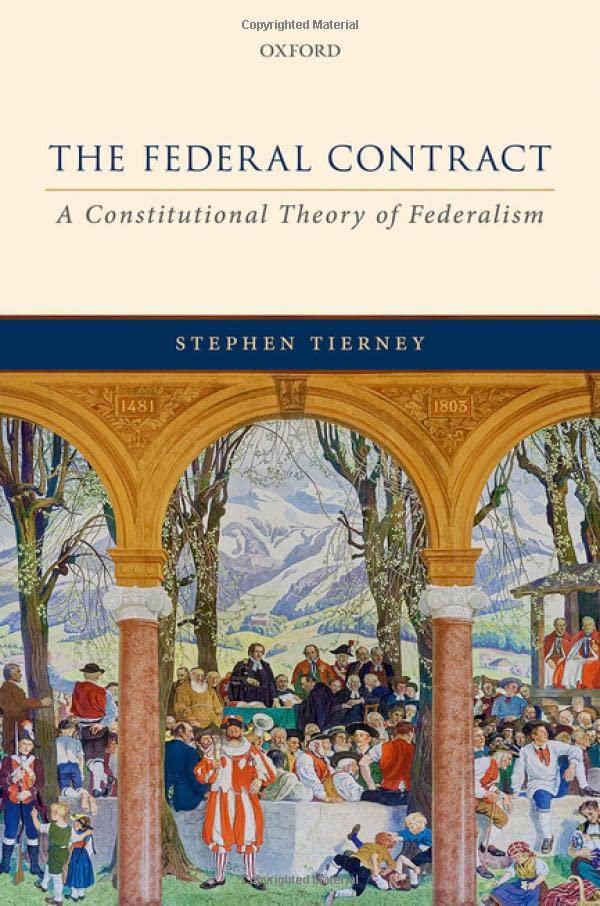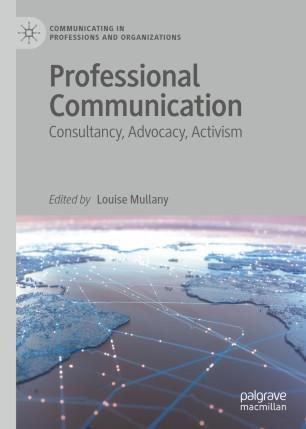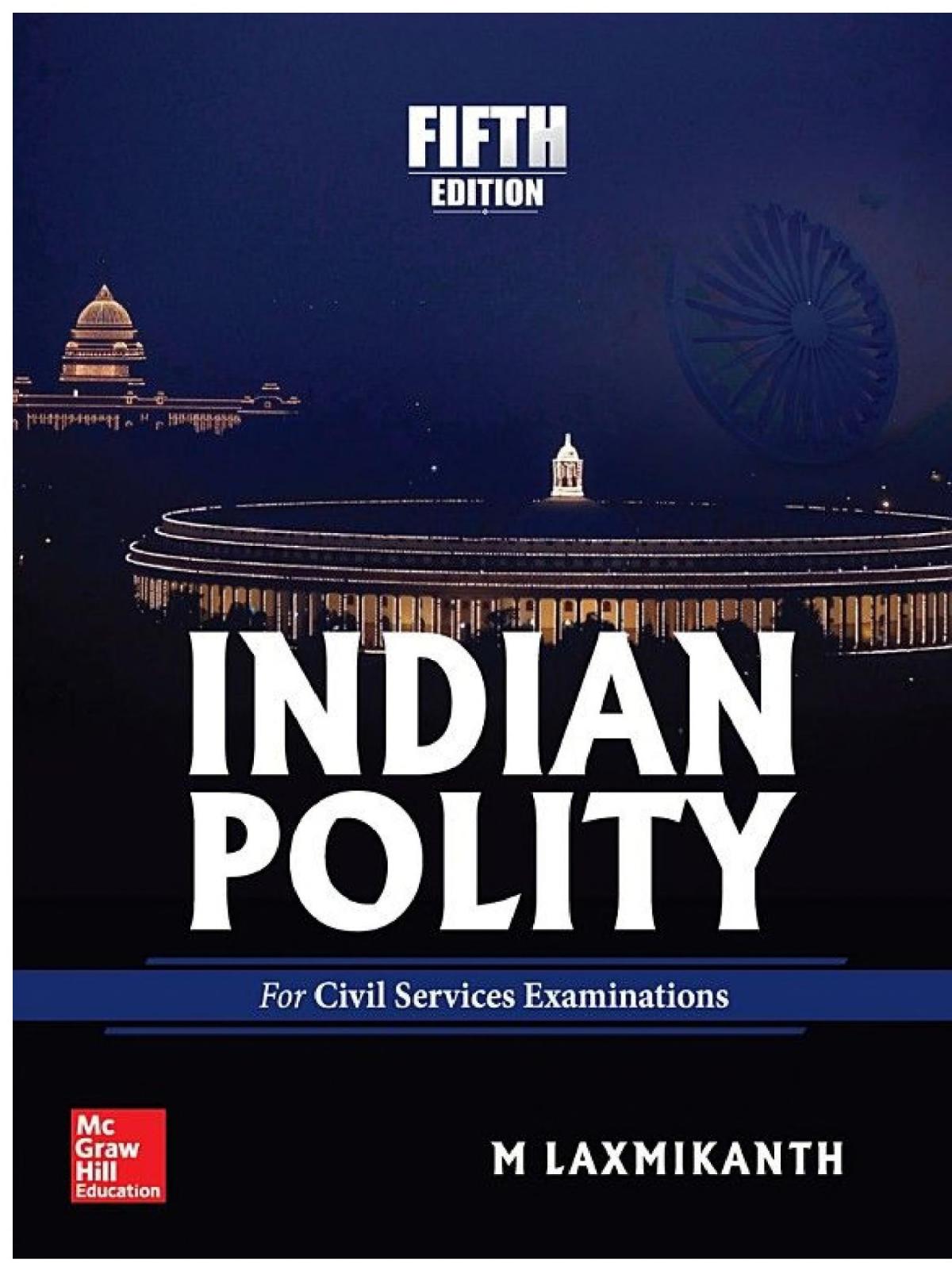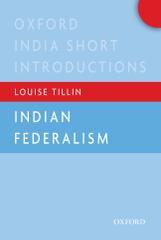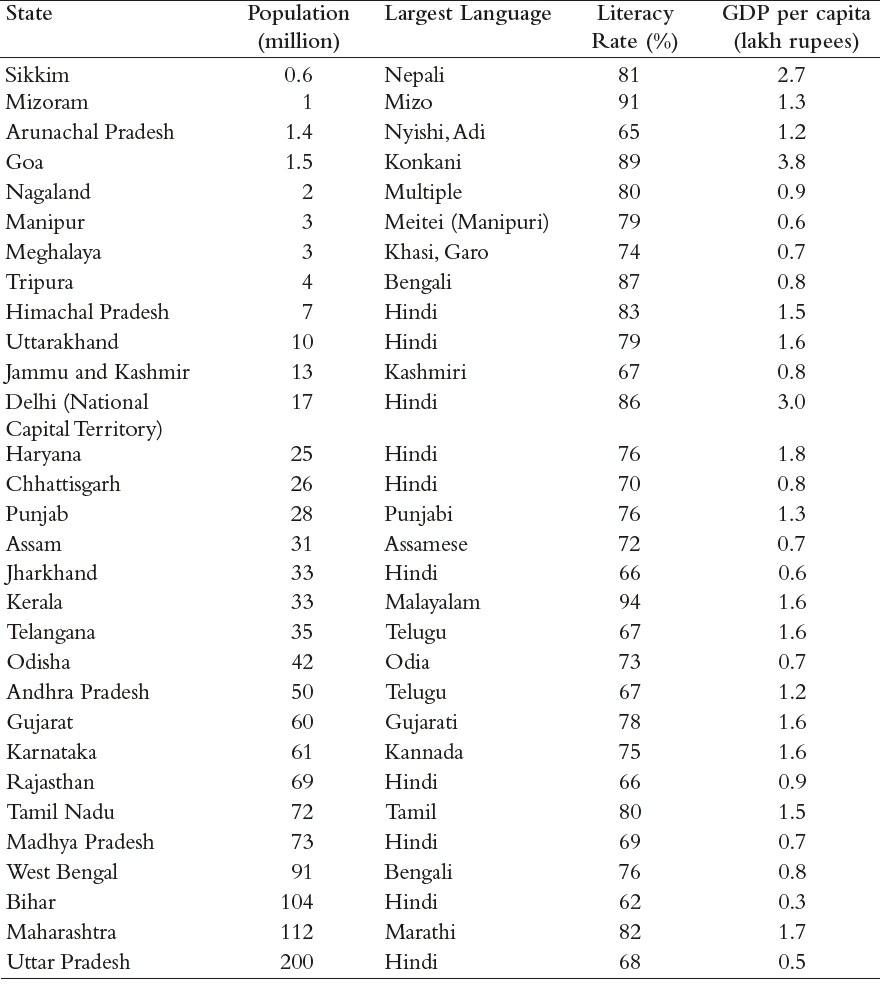Indian Federalism Louise Tillin
Visit to download the full and correct content document: https://ebookmass.com/product/indian-federalism-louise-tillin/
More products digital (pdf, epub, mobi) instant download maybe you interests ...
Mr. Notting Hill Louise Bay
https://ebookmass.com/product/mr-notting-hill-louise-bay/
The Dynamics of Federalism in Nigeria 1st ed. Edition Ambrose Ihekwoaba Egwim
https://ebookmass.com/product/the-dynamics-of-federalism-innigeria-1st-ed-edition-ambrose-ihekwoaba-egwim/
Louise Dupin's Work on Women Angela Hunter
https://ebookmass.com/product/louise-dupins-work-on-women-angelahunter/
Mister 06 - Mr Notting Hill Louise Bay
https://ebookmass.com/product/mister-06-mr-notting-hill-louisebay/
The Federal Contract: A Constitutional Theory of Federalism Stephen Tierney
https://ebookmass.com/product/the-federal-contract-aconstitutional-theory-of-federalism-stephen-tierney/
Business and Management Consulting 6th Edition Louise Wickham
https://ebookmass.com/product/business-and-managementconsulting-6th-edition-louise-wickham/
Professional Communication: Consultancy, Advocacy, Activism 1st ed. Edition Louise Mullany
https://ebookmass.com/product/professional-communicationconsultancy-advocacy-activism-1st-ed-edition-louise-mullany/
The New Fat Flush Plan 2nd Edition Ann Louise Gittleman
https://ebookmass.com/product/the-new-fat-flush-plan-2nd-editionann-louise-gittleman/
Indian Polity 5th Edition M Laxmikanth
https://ebookmass.com/product/indian-polity-5th-edition-mlaxmikanth/
OXFORD INDIASHORT INTRODUCTIONS
INDIANFEDERALISM
TheOxfordIndiaShort Introductionsareconcise, stimulating,andaccessibleguides todifferentaspectsofIndia Combiningauthoritativeanalysis, newideas,anddiverseperspectives, theydiscusssubjectswhichare topicalyetenduring,asalso emergingareasofstudyanddebate
OTHERTITLESINTHESERIES
JawaharlalNehru
RudrangshuMukherjee
ThePartitionofIndia
HaimantiRoy
IndianNuclearPolicy
HarshV PantandYogeshJoshi
IndianDemocracy
SuhasPalshikar
IndianNationalSecurity
ChrisOgden
Business,Institutions,Environment
RunaSarkar
PublicPolicyinIndia
RajeshChakrabartiandKaushikiSanyal
Bollywood
M.K.Raghavendra
TheIndianMiddleClass
SurinderS.JodhkaandAseemPrakash
IndianForeignPolicy
SumitGanguly
DalitAssertion
SudhaPai
Formoreinformation,visitourwebsite: https://india.oup.com/content/series/o/oxford-india-short-introductions/
OXFORD
INDIASHORT
INTRODUCTIONS
INDIANFEDERALISM
LOUISETILLIN
OxfordUniversityPressisadepartmentoftheUniversityofOxford ItfurtherstheUniversity’sobjectiveofexcellenceinresearch,scholarship, andeducationbypublishingworldwide Oxfordisaregisteredtrademarkof OxfordUniversityPressintheUKandincertainothercountries
PublishedinIndiaby OxfordUniversityPress 2/11GroundFloor,AnsariRoad,Daryaganj,NewDelhi110002,India
©OxfordUniversityPress2019
Themoralrightsoftheauthorhavebeenasserted
FirstEditionpublishedin2019
Allrightsreserved Nopartofthispublicationmaybereproduced,storedin aretrievalsystem,ortransmitted,inanyformorbyanymeans,withoutthe priorpermissioninwritingofOxfordUniversityPress,orasexpresslypermitted bylaw,bylicence,orundertermsagreedwiththeappropriatereprographics rightsorganization Enquiriesconcerningreproductionoutsidethescopeofthe aboveshouldbesenttotheRightsDepartment,OxfordUniversityPress,atthe addressabove
Youmustnotcirculatethisworkinanyotherform andyoumustimposethissameconditiononanyacquirer
ISBN-13(printedition):978-0-19-949561-0
ISBN-10(printedition):0-19-949561-0
ISBN-13(eBook):978-0-19-909787-6
ISBN-10(eBook):0-19-909787-9
TypesetinBemboStd11/143 byTranisticsDataTechnologies,NewDelhi110044 PrintedinIndiabyNutechPrintServicesIndia
Tomyfather,Clive Inlovingmemory
Contents
ListofTables
ListofAbbreviations
Acknowledgements
Introduction:India’sFederalModel
1ConstitutionalDesign
2FederalismandDiversity
3GoverningIndia:Centre–StateRelations
4FederalismandtheEconomy
Conclusion:TheFutureofIndianFederalism
FurtherReading
ListofReferences Index
AbouttheAuthor
Tables
I.1DiversityofIndia’sStates
1.1DistributionofCompetencies
3.1SourcesofStateRevenue(asPercentageofTotalRevenue),2016–17
Abbreviations
AFSPA ArmedForcesSpecialPowersAct
AGP AsomGanaParishad
BDO blockdevelopmentoffice
BJP BharatiyaJanataParty
BJS BharatiyaJanaSangh
CPI CommunistPartyofIndia
DMK DravidaMunnetraKazhagam
FDI foreigndirectinvestment
FRBM FiscalResponsibilityandBudgetManagement
GDP grossdomesticproduct
GST goodsandservicestax
GTA GorkhalandTerritorialAdministration
IAS IndianAdministrativeService
ISC Inter-StateCouncil
J&K JammuandKashmir
MGNREGA MahatmaGandhiNationalRuralEmploymentGuaranteeAct
MGNREGS MahatmaGandhiNationalRuralEmploymentGuaranteeScheme
NDA NationalDemocraticAlliance
NDC NationalDevelopmentCouncil
NITIAayog NationalInstitutionforTransformingIndiaAayog
OBC OtherBackwardClass
PDS publicdistributionsystem
PMJAY PradhanMantriJanArogyaYojana
SVD SamyuktaVidhayakDal
TDP TeluguDesamParty
UDAY UjjwalDiscomAssuranceYojna
UPA UnitedProgressiveAlliance
USA UnitedStatesofAmerica
VAT valueaddedtax
Introduction
India’sFederalModel
Federalism rests on an idea of shared and multi-layered sovereignty enshrined within a particular configuration of politicalinstitutions Infederalsystems,atleasttwolevelsofgovernment inIndia’scase,theCentreandthestates share in the task of governing but have their own spheres of autonomy. Their joint and individual roles are typicallyprotectedbyawrittenconstitution,withaSupremeCourtservingasanumpireincaseofdisputes
Federalism has enabled the expression and protection of diverse forms of belonging within India and has been central to the richness and resilience of India’s democracy. It is difficult to imagine a country of India’s scale and societal diversity being governed without compromises over the sharing of decision-making rights and administrative responsibilities amongst tiers of government at the all-India and regional levels. Yet, some of the biggest dilemmas facing India today arise from the complexities and ambiguities generated within the resulting federalorder.
In order to get to the bottom of how policies are made and the impacts they have in India’s complex multi-level politicalandeconomicecosystem,anappreciationoffederalismisessential Theabilityofthecentralgovernmentto promote economic dynamism or reduce inequality between regions, or the ability of India’s states to define and resource their own policy agendas that speak to local needs and priorities, is shaped by federal institutions and practice. Questions such as how to achieve a balance between regional political, fiscal, and administrative autonomy, and the scope for authoritative policy making by the central government are some of the thorniest issues facingIndiatoday.
India’sUniqueApproach
India’s model of federalism reflects the circumstances in which it was created in the aftermath of Partition and in an era when the need for strong central governments able to steer national development plans was influencing the designandreformoffederalsystemsinothercountries
The heavily centralised order that India’s constitutional architects opted for in the aftermath of the partition of the subcontinent departed radically from earlier visions of a decentralised federal model for India in which the central government’s role would have been restricted to a small number of nationwide subjects and provinces empowered. India designed a federal system in order to share power with provinces. But strong measures were put inplacetomaintaintheauthorityofthecentralgovernment,andtoallowfortheoperationofmoreunitarypowersin times of emergency. Reflecting this, the word federalism does not appear by name in the constitutional text. As Dr BR Ambedkar said on introducing the draft constitution to the Constituent Assembly, the constitution was federal totheextentitintroduceda‘dualpolity’inwhichtheCentreandthestateseachhavesovereignpowersexercisedin fields established by the constitution But the flexibility inherent in the Indian constitution distinguished the proposedIndianmodeloffederalismfromallthathadgonebefore:
All federal systems including the American are placed in a tight mould of federalism No matter what the circumstances, it cannot change its form and shape. It can never be unitary. On the other hand … [India’s] Draft Constitution can be both unitary as well as federal according to therequirementsoftimeandcircumstances Innormaltimes,itisframedtoworkasafederalsystem Butintimesofwaritissodesignedasto make it work as though it was a unitary system Such a power of converting itself into a unitary State no federation possesses This is one pointofdifferencebetweentheFederationproposedintheDraftConstitution,andallotherFederationsweknowof (Ambedkar1948)
The Constituent Assembly had designed a model to enable the central government to act fast with relatively few checks in instances where internal or external crises threatened stability. The constitution also enshrined a model of strong interdependence between the central government and states that was intended to push both levels of governmenttoworktogethertoresolveissuesofnationalimportance.
For these reasons, India’s form of federalism has sometimes been held up as a diminished version of the ‘real
thing’ From the time the constitution was crafted, observers described it as a ‘quasi-federal’ system because of the weak protections it appeared to offer to the autonomy of states compared to other federal systems India stands out from other classic federal systems such as the United States of America (USA) that were forged after formerly independent territories pooled their sovereignty and designed a model of federation that would protect their autonomy There have been many instances over time in which India’s central government has, in more and less egregious ways, compromised the autonomy of states. However, it is also clear that India has defined its own constitutionalpracticeoffederalismratherthanfollowingearlierblueprints
India’s form of federalism is best seen as an original rather than a derivative or diminished form It is a centralised model with a strong degree of interdependence between the central government and the states. But it has apermissiveapproachtoconstitutionalamendmentprovidingflexibilitytotackleissues,especiallythoseconcerning theaccommodationofdiversitythatcouldprovemuchmoreintractableinamorerigidlyinterlockedfederalsystem.
Over time, India has also become more genuinely ‘federal’ as a result of political and economic change. In the early decades, the dominance of the Congress party nationally and across states helped to bind the Indian Union together. The greatest tensions between the central government and the states emerged in the subsequent period during which Congress dominance was challenged Centre–state relations, and calls for greater regional autonomy, formed part of the platform around which opposition to Indira Gandhi’s leadership coalesced in the 1970s and 1980s The ensuing parallel processes of economic liberalisation and political regionalisation from the late 1980s increased the centrality and autonomy of states in political and economic life. The involvement of regional parties alongside national parties in coalition governments at the Centre from the 1990s also enhanced the extent to which regionalvoiceswererepresentedinthecentralgovernment.
India is today often seen as a model for emulation, or learning from, by newly federalising countries looking at ways to accommodate societal diversity India’s experience of federalism has also helped to counter some of the more pessimistic proclamations of those who have drawn from the failed experiments with federalism in the former Soviet Union or Yugoslavia to argue that internal borders should not be drawn along ethnic or linguistic lines, as India’s have been since the first linguistic reorganisation of state boundaries in southern India in the mid-1950s By extension, federalism or the pursuit of ‘unity in diversity’ has informed the image of itself that India has projected in international diplomacy in recent decades as a country whose own internal diversity (see Table I1) servesasabridgebetweencountries.
TableI1DiversityofIndia’sStates
Source: Population,literacy,andlanguages(2011census) NB LiteracyrateforAndhraPradesh/Telanganaispre-bifurcation;percapitanetstatedomestic product(atcurrentprices)for2016–17(exceptTripura2015–16),RBI2017–18
Note:Statesarelistedbypopulationsize(smallesttolargest)
AsformerprimeministerManmohanSinghsaidinhisIndependenceDayspeechin2007:
The success of a secular democracy in a nation of a billion people with such diversity is viewed with admiration This great idea of India as a symbol of unity in diversity is increasingly viewed with respect and regard Our tolerance, our capacity to assimilate and our ability to reconcile the irreconcilable are objects of wonder…. Today, we enjoy good relations with all major powers and all developing countries. We have emerged as a bridge between the many extremes of the world Our composite culture is living proof of the possibility of a confluence of civilizations Indiawillalwaysbeanationbridgingthemanyglobaldivides (Singh2007)
Yet, the simultaneous political and economic decentralisation of the 1990s and 2000s also threw up the old
challenges of how to ensure balanced regional development and to incentivise different parts of the country to contribute to the dynamism of the national economy The emergence of multi-party governments in which the parties in power at the Centre and in the states were often incongruent, and during which national and regional parties shared in the task of government formation in New Delhi, had increased the complexity of governing India fromtheCentre
Paying attention to the constitutional, political, and economic dimensions that affect the relationship between the central government and the states in India, this short introduction seeks to stimulate an understanding of the development and functioning of India’s federal model The book’s main focus is the Centre–state relationship The analysis does not extend to a detailed examination of democratic decentralisation to the third tier of local government or panchayati raj institutions, although this has been another important part of the landscape of decentralisationfromthe1990s.
The book begins by looking at the origins of federal ideas in India, including the development of provincial governments under British colonialism as well as the debates about Centre–state relations that occurred in the Constituent Assembly. Chapter 1 investigates why those debates, taking place in the aftermath of Partition, eventually led to the adoption of a comparatively centralised but nonetheless flexible vision of federalism that provides the constitutional framework for Centre–state relations to date. It also looks at the way that regional interests are represented at the Centre, especially in the Rajya Sabha (Council of States), the delineation of the respectivepowersoftheCentreandthestates,andthechoiceofparliamentary,ratherthanpresidential,federalism.
Chapter 2 reflects upon the role of India’s flexible federal model in providing institutional recognition to societal diversity, preventing linguistic conflicts, and contributing to the stability of Indian democracy Over time, the evolution of federalism in India has allowed for a degree of self-governance for regional linguistic communities, preventing language from becoming a major source of conflict within the Indian body politic India has also experimented with a range of approaches to conflict settlement that have grafted new forms of autonomy for minorityethniccommunitiesontotheconstitutionalstructure Thecreativeadaptationoffederalismtoaccommodate the claims for recognition and decision-making of groups from Kannada, Tamil, or Telugu speakers in southern IndiatoMizosinnorth-easternIndiahasbeenessentialforIndia’sabilitytoholdtogetherinitsdiversity.
However, the chapter also explores the limits of the extent to which the Indian approach to federalism has embraced divergent views of what membership in the Indian Union should entail States that sit on India’s border withPakistan,notleastJammuandKashmir(J&K),aswellaspartsoftheNortheast,haveseentheirmembershipof the Indian Union as often secured by coercion as by accommodation Various ‘asymmetric’ devices that offer different degrees of autonomy to regions such as J&K, as well as some states in Northeast India, have in some instances been honoured more in the breach, and in others have raised new concerns about the rights of sub-state minoritiesinstateswhereaparticularcommunityhasbeengivenaprivilegedformofrecognition.
Chapter 3 turns to the question of how the pattern of Centre–state relations affects the practice of governing India Inmanyways,theconstitutionplacedastrongonusoncooperationbetweenthecentralgovernmentandstates to jointly tackle the pressing challenges of social and economic development that lay before India in 1950. The rhetoric of cooperative federalism has circulated in and out of political fashion since then, but all central governments have been faced with the question of how to work effectively with the states to pursue national goals. Thecentralgovernmenthasacrosstimebeenapre-eminentarenaforpolicyformulation,butithasalwaysdepended crucially on the state-level administration for implementation. The state level has loomed even larger in the political and economic lives of India’s citizens and businesses since the 1990s Problems of state capacity that affect the routine implementation of national policies are endemic in many states, but elsewhere divergent policy preferences can also throw up Centre–state tensions and give rise to distinct subnational policy cultures State governments face the challenge of representing local needs and preferences while working within a shared policy framework where centralresourcesfrequentlycomewithstringsattached
Numerous institutional devices have been designed to facilitate or incentivise better cooperation between the Centreandstates,butthemostimportantfeaturedeterminingtheoutcomeofintergovernmentalrelationsisarguably the party system. This chapter thus considers the ways in which changes in the wider political environment have shapedtheoperationofCentre–staterelationsoverhistory
Chapter4 deals with the parallel question of how economic change has transformed the operation of federalism and vice versa. Economic liberalisation in India entailed the dismantling of centralised economic planning. State governments took centre stage in the ensuing race to entice private capital, both domestic and international Economic decentralisation is often held to promote the dynamism of markets. Central governments since liberalisation have sought to encourage competition between states as a means of incentivising them to attract investment. But the extent to which inter-state competition is driving economic dynamism in India is open to
question. Regional inequality has increased since the onset of liberalisation, and the gains of greater exposure to the globaleconomyhavebeencapturedbyahandfulofstates Furthermore,localpoliticsandpoliticaleconomicfactors frequentlydrivestategovernmentstotakedecisionsthatareatoddswiththeideathatcompetitionbetweenstatesfor investment will drive macro-economic stability and produce ‘business-friendly’ environments Rural sectors continue to be influential in state-level politics, producing countervailing pressures on reform agendas and raising distributivequestionsthatstategovernmentsaddressindifferentways.
Untilveryrecently,therewasageneralconsensusthatIndiawasmovinggraduallyalonganirreversibleprocess ofgreaterfederalisation,aprocessthathadbeenspurredbypartysystemchange,economicliberalisation,andsocial change, with urbanisation and growing penetration by regional media houses contributing to the consolidation of distinctive regional cultures within the constituent states of the Union These features have all strengthened India’s ‘federalism in practice’ over some of the more limiting features of the constitution. Yet, the recent shifts back towards a scenario of one-party dominance since the Bharatiya Janata Party’s (BJP)’s national election victory in 2014 throw into sharp relief the underlying features of India’s constitution and unsettle the notion that federalisation isalinearprocessinIndia
India’s federal constitution is a parliamentary model that empowers an executive selected from, and primarily responsible to, the lower house of the legislature. Territorial representation is relatively weak when states have found a greater voice at the Centre, it has been as a result of their political empowerment more than their constitutional standing. When political power is consolidated in the hands of a single party, the checks that arise from the compulsions of coalition government do not function Governments with parliamentary majorities in Delhi areabletogoverninquitedifferentwaystocoalitions.Ifthe1990sand2000sweredecadeswherestateswereatthe centre of the action the primary focus of voters, with regional parties key players in holding together national coalitions the 2010s have been a decade of renewed centralisation, especially since the ascendancy of the BJP under Prime Minister Narendra Modi since 2014 A brief Conclusion, therefore, reflects on some of the challenges facingfederalisminIndiainthecurrentera.
ConstitutionalDesign
The Indian constitution was written between 1946 and 1949. It was the output of a generation of political leaders who had led the new nation to independence from colonial rule, but was also indelibly shaped by the traumatic aftermath of the partition of India and Pakistan. The task of nation-building rested heavily on the Constituent Assembly’s shoulders Above all, the architects of India’s constitution sought to prevent any future rupturing of the new Indian nation. The constitution was designed with an eye on the goals that the leaders of the new nation saw before themselves, those of social and economic progress These circumstances and ambitions profoundly shaped thecharacterofthepoliticalinstitutionsframedbytheConstituentAssembly.
The resulting institutional design enshrined a pattern of power sharing between a central government and regional governments that was protected by a written constitution. But the new model of federalism crafted by the ConstituentAssemblydepartedinmarkedwaysfromotherfederalconstitutionsthathadbeenestablishedbeforethe mid-twentiethcenturyintheUSA,inSwitzerland,andinotherformerBritishcoloniessuchasAustraliaandCanada astheytransitionedtodominionstatuswithintheempire Infact,theconstitutionitselfdoesnotusethewordfederal or federalism, marking its clear departure from ‘classic’ models of federalism, even if the Indian model today is increasinglyregardedasanimportanttypeoffederalisminitsownright
In important ways, the constitution appeared to violate what had, until then, been seen as a cardinal feature of federalconstitutions:theideathatthefederalandregionalgovernmentsshouldeachhaveindependenceintheirown sphereofauthority ThemodeladoptedinIndia,sometimesdescribedasoneof‘cooperativefederalism’,centredon the belief that the Union and state governments should be interdependent. Many of the critical nation building tasks were seen as requiring a role for the central government, even where the state governments would need to be key partners in their design and implementation. They were, therefore, included in the extensive concurrent list of the constitution, where powers are shared between the central government and the states Beyond this constitutionally enumerated shared domain, the Union government was also constitutionally empowered to act in, and even take over, the execution of policies in the domain of the states in situations of emergency, and on routine matters under certain conditions. The states were also made heavily dependent on the central government for revenue transfers; to thisday,theylackindependentrevenueraisingpowerstofinancetheirfullsetofresponsibilitiesunderthestatelist
ThereisrelativelyweakrepresentationofstateinterestsattheCentre Statesarerepresentedonthebasisoftheir population not on an equal basis in the second chamber of India’s Parliament, the Rajya Sabha. While the Rajya Sabha reflects the partisan composition of state legislative assemblies which elect it, it mirrors the territorial compositionofthelowerhouse,whichmeansthatlargestatesdominatebyvirtueoftheirsize TheRajyaSabhahas becomemorepowerfulinperiodsofincongruencebetweenpoliticalcoalitionsattheCentreandelectoralpatternsin the states, something that was more common after 1989 But on the whole, it does not act as a distinctive space for discussion of states’ interests vis-à-vis each other or the Centre. This set-up makes India look very different to presidentialfederationssuchastheUSAorBrazilwheretheequalrepresentationofstatesintheSenate introduces a different pattern of representation compared to their lower houses, giving small states equal representation to their largercounterparts
Lastly, while it is clear that India has an indestructible Union, the borders of its states are themselves violable Under Article 3, the Union government has the power to alter the boundaries of an existing state through division of its territory, or addition or removal of certain territories These powers can be initiated by the approval of a simple majorityinParliament;theydonotrequireapprovalbythestate(s)concerned.
These features of the Indian constitution all impart a centralised character that at times veers closer to a unitary government They qualify the idea of an independent sphere of authority for the states, and led observers at the time of the constitution’s framing, such as the constitutional expert K.C. Wheare, to classify India as a ‘quasi-federal’ system Yet, this term has always risked treating India’s constitutional model as a diminished version of something
else, rather than a model in its own right Furthermore, it misses the fact that in many ways the kinds of hybridity that were intrinsic to the Indian constitution were also emerging in other longer-established federal systems in the same period. In other federal systems too, the problems of the mid-twentieth century gave rise to a greater role for central governments in initiating new approaches to social security and economic planning as they moved away fromlaissezfairecapitalismtobuildnewwelfarestates
Theunitary-likeelementsoftheIndianconstitutionhavealsogivenitaflexiblecharacter,whichhave perhaps unexpectedly contributed to the further federalisation of the Indian polity over time. Measures such as the linguistic reorganisation of states, which have been critical for the recognition of minority rights and federal stability, would have been more difficult in a more rigid, interlocked model of federalism that protected an existing balance of power among states Over time, they have contributed to the emergence of a more genuinely federal polityreflectiveofIndia’sgreatsocietaldiversity.
FactorsThatShapedtheDesignofFederalism
Whiletheconstitutionisdecidedlyaproductoftheparticularcircumstancesandvisionofthepoliticaleliteofnewly independent India, it was informed by close knowledge of other constitutions The framers of India’s constitution carefully studied other federal constitutions as they developed their own plans. They also retained many of the features of the Government of India Act of 1935, which was the first constitutional model to be implemented in India that included something resembling an architecture of federalism, even if one that was heavily qualified by India’sdiminishedsovereigntyundercolonialism TheMontagu–ChelmsfordReformsthatledtotheGovernmentof India Act of 1919 followed by the Government of India Act of 1935 were introduced by the British in response to growing nationalist demands. The Acts introduced successive models of limited self-governance at the provincial level The1935ActinparticularsoughttoaccommodatetherivalnationalismsprofessedbytheMuslimLeagueand the Indian National Congress by proposing a federal model which placed residuary powers with the provinces in order to allow fulsome autonomy for Muslim majority areas of the country It also proposed a model of federation betweentheBritishProvincesandthe560-oddprincelystates.
Only the first part of the Government of India Act of 1935, which gave autonomy in certain domains to provincial governments, was ever implemented The first elections to new provincial legislative assemblies in British provinces were held in 1936–7 on a limited but expanded franchise that also included propertied women as voters for the first time The advent of the Second World War put negotiations with the princely states about entry into a federation into abeyance. So it was only after Independence under conditions of full suffrage and following the accession of most princely states to the Union, but with the loss of most Muslim-majority areas to Pakistan due toPartition thatafull-fledgedIndianmodeloffederalismcameintobeing.
It is impossible to understand the factors shaping the approach to federalism taken by the Constituent Assembly without addressing the impact of Partition At the outset of the Assembly’s deliberations in December 1946, Nehru had introduced an Objectives Resolution, proposing the key contours of a future constitution at a time when it was still hoped that the Muslim League would join the Constituent Assembly In order to appeal to the Muslim League, the Objectives Resolution envisaged a heavily decentralised federation with residuary powers remaining with the provinces After the announcement of Partition in June 1947, the Union Constitution Committee of the Constituent Assembly rapidly moved to adopt a centralised federal model in which residuary powers would lie with the Union government Thiscentralisedvisionwasdesignedwiththeintentionofdeterringanyfuturethreatstotheintegrityof thenewIndiannationafterPartition
Another distinctive feature of the circumstances that gave rise to the Indian constitution, in contrast to other earlier federations, was that it was not the product of a bargain between previously independent polities opting to pool their sovereignty The decision to federalise involved granting self-rule within a carefully specified domain to provinces that had previously been governed from the Centre under British colonial rule. While the eventual integration of the princely states did involve the fusing of entities with different prior status, this integration was not theresultofequalbargainswiththehundredsofindividualstates.
The result was that, as the constitutional scholar Granville Austin described, the constitutional negotiations resembled the members of a family in possession of their own house for the first time, working out how to live together (Austin 1966, 192). Political scientists refer to the federal system that emerged from these negotiations as an example of a ‘holding together’ federation as distinct from a ‘coming together’ federation such as the USA In reality,theintegrationoftheprincelystatesalsoinvolvedanelementof‘puttingtogether’,giventhatforcewasused wherenecessarytointegrateregionsthatresistedincorporation
In Ambedkar’s words, the constitution’s Drafting Committee had opted for the word Union rather than federationbecause:
The Federation was not the result of an agreement by the States to join in a Federation the Federation not being the result of an agreement, no State has the right to secede from it The Federation is a Union because it is indestructible Though the country and the people may be dividedintodifferentStatesforconvenienceofadministrationthecountryisoneintegralwhole,itspeopleasinglepeoplelivingunderasingle imperiumderivedfromasinglesource (Ambedkar1948)
Federalism is therefore not mentioned by name in the Indian constitution. But since 1994, it has been legally recognised as part of the constitution’s basic structure which cannot be amended Federalism was recognised as part of the ‘basic structure’ by the Supreme Court in SRBommaiv. Union of India, 1994, and Kuldip Nayar v. Union of India, 2006 But as the chief justice said in the Kuldip Nayar ruling, while ‘the federal principle is dominant in our Constitution and that principle is one of its basic features … it is also equally true that federalism under the Indian ConstitutionleansinfavourofastrongCentre’
DemarcationofUnionandStateAuthority:‘CooperativeFederalism’?
Bythemid-twentiethcentury,therewasagrowingrecognitionthatfederalsystemspremisedontheprincipleoftwo levelsofgovernmentoperatingindependentlyofeachotherwereill-suitedtorespondtosomeofthenewchallenges of the post-war world. In the USA, the idea that the federal government should do more to protect people from the vagaries of market forces and unfettered capitalism gained ground following the Great Depression of 1929 The New Deal that followed, and mobilisation for the Second World War, further strengthened belief in the role of the federalgovernmentandtheneedforintergovernmentalcooperation Callsfor‘cooperativefederalism’,withalarger roleforthecentralgovernment,grewwithcampaignsagainstracism,sexism,andurbanpoverty.
As governments in many parts of the world crafted new forms of social security and social insurance as part of new post-war compacts with their populations, it was recognised that heavily decentralised federal systems faced unique problems. Competition between provinces or states within decentralised federal systems undermined the initiationofpoliciessuchasunemploymentinsurance,healthinsurance,oroldagepensionsthatdisadvantagedlocal employers because they imposed costs on employers or had to be financed through increases in local taxation. Furthermore,provinceswereunevenlyendowedwithabilitiestoraisetaxandthusachievinginter-regionalequityin a decentralised federation was difficult. Increasingly, federal countries such as Australia, Canada, and the USA began to see more active forms of central government intervention in distributive questions Sometimes this involved new powers being granted to the centralgovernment such as responsibility for old age pensions in Canada, and in most places it involved the increasing dependence of regional governments on financial transfers from the central government, and the use of conditional grants by the federal government to promote progress in policy areas thatwereconstitutionallythedomainofthestates
In India, an appreciation of these emerging issues was hardwired into the constitution from the outset. Some form of federalism was seen as essential in India given its scale and diversity (although the units of the federation did not effectively represent that diversity until the linguistic reorganisation of states in the 1950s). But the form of federalism that was designed effectively enshrined many of the emerging practices of intergovernmental collaboration in other federations at the heart of the constitutional order, rather than strictly preserving independent spheresofauthorityfortheUnionandstategovernments Whilethephrase‘cooperativefederalism’wasnotusedin the constitution, contemporary observers such as A.H. Birch and Austin described the resulting constitutional order in these terms The language was also used by the Sarkaria Commission on Centre–state relations in its 1988 report, whichstated:
By the middle of the Twentieth Century, federalism had come to be understood as a dynamic process of co-operation and shared action between two or more levels of government, with increasing inter-dependence and Centrist trends The framers of the Constitution took due note of these changing concepts and functional realities Avoiding a dogmatic approach, they fashioned a sui generis system of two-tier polity in which thepredominantstrength oftheUnion isblended with theessenceofco-operativefederalism (Government of India 1988, Chapter 1, clause1328)1
The Indian constitution divides zones of responsibility between the central government and the states on the basis of three lists contained in the Seventh Schedule: the Union, state, and concurrent list (Table 11) The Union government is responsible for issues that affect India as a whole including war, internal security, macro-economic stability (including currency, foreign exchange, international trade, banking, insurance, and operation of stock exchanges), and the provision of public goods that are nationwide in scope (such as railways, communications, national highways, air transport, atomic energy, space, oilfields and major minerals, interstate trade and commerce,
and regulation of interstate rivers) The states were given responsibility for issues such as local government, education, public health, and agriculture that were seen as best administered by a local tier of government, close to thepointofimplementation.Theyalsohavejurisdictionoverpublicorder,prisons,andpolicing.
Table1.1DistributionofCompetencies
Union State Concurrent Defence;armedforces(including deploymentofarmedforceinaidof civilpowerinanystate);atomic energy;foreignaffairs;entering into/implementinginternational treatiesoragreementswithforeign countries;citizenship;railways, nationalhighways,national waterways,maritimeshipping,and airways;communications (broadcasting,post,telephones); currency;foreignloans;ReserveBank ofIndia;interstatetradeand commerce;banking;insurance;stock exchangesandfuturesmarkets; establishmentofstandardsofweight andmeasure;UnionPublicServices; constitution,organisation,andpowers ofSupremeCourt;incometaxes (otherthanagriculturalincome); customsduties;corporationtax; jurisdictionandpowersofallcourts exceptSupremeCourtwithrespectto mattersinthislist
Source:ConstitutionofIndia,SeventhSchedule Note:Thisisanindicative,notanexhaustivelist
Publicorder;police;prisons;local government;publichealthand sanitation,hospitalsanddispensaries; pilgrimages;agriculture;water(water supplies,irrigationandcanals, drainageandembankments,and others);land(landrights,tenure, transfer,collectionofrents,etc); industries(exceptwherenecessaryfor warorwhereUnioncontrolhasbeen deemedinpublicinterest);tradeand commercewithinstate;moneylending;electionstothestate legislature;statepublicservices;land revenue;taxesonagriculturalincome; salestaxes(exceptnewspapers);taxes onentryofgoodsintolocalareafor consumptionorsale;taxeson luxuries;jurisdictionandpowersofall courtsexceptSupremeCourtwith respecttomattersinthislist
Criminallawandprocedure; preventivedetention;marriageand divorce;transferofpropertyother thanagriculturalland;contracts; bankruptcyandinsolvency; preventionofcrueltytoanimals; economicandsocialplanning;trade unions,industrialandlabourdisputes; socialsecurityandsocialinsurance; welfareoflabour;education(since 1976);legal,medical,andother professions;charitiesandcharitable institutions;tradeandcommercein industrialproductsdeemedby parliamenttobeinpublicinterest, foodstuffs,cattlefodder,rawcotton, andjute;pricecontrol;factories; electricity;newspapers,books,and printingpresses;jurisdictionand powersofallcourtsexceptSupreme Courtwithrespecttomattersinthis list
The extensive concurrent list then covered issues in which both the Union and state governments took an interest. These were areas where it was deemed that national coordination was important in order to facilitate national planning, where national uniformity was desired or where it was anticipated the Union government may need to encourage the states to take action. The concurrent list contains Economic and Social Planning, Trade Unions, industrial and labour disputes, social security and social insurance, labour welfare, as well as criminal law, marriage, divorce, and other family issues among other subjects. The constitution left scope for some provincial entrepreneurshipintheconcurrentdomain:statelegislationcanprevailovercentrallegislationbutonlyifithasbeen passedlaterandreceivedapprovalfromthepresident.
In fiscal terms, the constitution also enumerates the allocation of taxation powers between the Centre and the states The most significant taxes were allocated to the Centre, including taxes on income and wealth from nonagricultural sources, corporation tax, taxes on production, and customs duty. The states were allocated a host of other taxes The most important today are sales tax, state excise, and stamp and registration fees However, these taxes were not expected to be sufficient to meet states’ expenditure responsibilities. Therefore, the constitution also provided for a system of Centre–state transfers overseen by an independent Finance Commission appointed every five years. The Finance Commission proposes formulae for the distribution of centrally levied taxes, as well as grants from the Consolidated Fund of India to the states Thus, in fiscal terms, the states are locked into a model of financial interdependence with the Union government in order to perform even those activities that are constitutionallyassignedtothem
Over time, other mechanisms have also been created to channel resources from the central government to the states, and in an attempt to bring states into line with national goals. Between 1950 and 2014, the Planning Commissionallocatedgrantsandloanstothestatestosupporttheirdevelopmentplans,whichnestedwithinthefive yearplanningcyclesofthePlanningCommissionattheall-Indialevel.Inaddition,centralministrieshavebeenable
to make grants directly to the states either as ‘central sector projects’ fully funded by the Centre, or as ‘centrally sponsored schemes’ match-funded by the states These centrally sponsored schemes increased in scope from the 1970sandoftendealtwithsubjectsthatwereconstitutionallyallocatedtothestates.
Thus, the constitution envisaged, and sought to facilitate, intergovernmental collaboration In its more unitary like provisions, it also empowered the Union government to routinely enter the domain of the states to facilitate nationalcoordinationandpreservenationalunity
For instance, the constitution offers ample scope to Parliament at the Centre to legislate on matters in the state list, where they relate to the implementation of international treaties or agreements (Article 253), when a national emergency is in operation (Article 250), on other matters deemed to be in the national interest, if a resolution permitting this is passed by two-thirds of those present and voting in the Rajya Sabha (Article 249), or if two or morestatelegislaturesrequestParliamenttolegislateonacommonmatter(Article252)
Parliament also supersedes state legislatures where a subject can be read in the Union list, even if it appears in the state or concurrent list. For instance, under centralised industrial planning, the central government directly regulated many industries, even though industries are constitutionally a state subject It could do so via entry 52 of the Union list which allows Parliament to legislate with regard to industries where Parliament declares their control by the Union to be ‘expedient in the public interest’ By the 1980s, the list of industries deemed to be in the public interest included the production of razor blades, gum, matchsticks, pressure cookers, bicycles, and zip fasteners. This situation led constitutional lawyer A Nani Palkhivala to exclaim in 1984 that ‘without amendment of the Constitution, “Industries” has been nefariously transformed into a Union subject and has ceased to be a State subject’(Prasad1985,18) ThedominanceoftheUnionParliamentoverstatelegislatureshasgenerallybeenupheld by the Supreme Court in cases that dispute the interpretation of overlap between the lists, or the application of residuarypowers(Singh2016)
Beyond the effective dominance of the Union government over state governments in terms of legislative powers, the central government under Article 356 also has the right to declare President’s Rule in a state where it is deemed that the government cannot govern ‘in accordance with the provisions of the Constitution’. These emergency powers much abused for political reasons up until the mid-1990s have been some of the most controversialfeaturesoftheconstitution.
Lastly, as we have seen, Article 3 permits the central government to redraw the boundaries of any constituent state of the union without the approval of its state legislature Such a measure would be unthinkable in a ‘states rights’ federation such as the USA, where the sanctity of the boundaries of the federating units are a core tenet, and where the composition of the Senate makes it much harder for any changes to the composition of the federation to occurbecauseitwouldaltertheexistingbalanceofpoweramongstates.
Ambedkar argued that granting broad powers to the Union government and adopting a permissive approach to constitutional amendments (except for those that altered the balance of powers or revenues between the Centre and states) offered flexibility in contrast to the problem of rigidity seen in other federal systems. The flexible nature of theconstitutionhasinmanywaysfacilitateditslongevityandenabledresponsivenesstochangingcircumstances
TerritorialRepresentationandParliamentaryFederation
Having explored the respective spheres of authority of the Union government and the states, and the ways in which central power can be and has been deployed under the constitution, it is worth asking what influence the states have in the formulation of Union policies via representation at the Centre. Constitutionally the main way in which states are represented at the Centre is in the upper chamber of Parliament The nature of state representation, and their powers at the Centre, is also shaped by the fact that India is a parliamentary federation in which the executive (the primeministerandhis/hercabinet)isdirectlyresponsibletothelowerhouse
Parliamentary and presidential systems interact with federalism in different ways Presidential systems such as the USA and Switzerland are based upon a separation of powers between the executive and legislature. In both the USA and Switzerland, there are two equally powerful houses in the federal legislature based respectively on representation by population, and the equal representation of the territorial units. By contrast, in parliamentary federations the relationship between the executive and legislative is fused, with the executive directly responsible to the legislature. In these systems, the role of the second chamber is typically more limited. This is partly because cabinet is responsible to the lower house, and because the second chamber (not directly elected) is intended to be a revising chamber rather than a competing centre of gravity. Some authors suggest that it is the parliamentary tradition built on strong cabinet rule that gives rise to majoritarian tendencies in India, as opposed to countries in
whichfederalismservesasameansforcheckingthepoweroftheexecutivebranchofgovernment
India’s states are represented in the Rajya Sabha on the basis of their population. They are indirectly elected by members of state legislative assemblies. This model follows that proposed in the Government of India Act of 1935, as well as the Nehru Committee Report of 1928 Relatively little consideration was given during constitutional debates of the 1920s and 1930s to the idea of a federal second chamber with equal representation of states. The Nehru Report simply concluded that because members of the upper house would be elected by provincial legislatures, provinces would feel that they were represented at the Centre. It is not clear why equal representation for the states did not receive greater attention during the subsequent Constituent Assembly debates One reason may be that the provinces were not coming together as formerly independent polities pooling their sovereignty in the constitutional negotiations Furthermore, the provinces were of vastly different sizes Another factor, as Austin (1966) suggested, may be the fear that equal representation for all constituent units would ultimately have led to the provincesbeingsidelinedbytheprincelystateswhichwerefargreaterinnumber
The Rajya Sabha does, however, have important powers as a second chamber, and most Constituent Assembly members saw its role predominantly as a revising chamber that would be able to reflect coolly on measures passed by the popularly elected lower house The Rajya Sabha can also initiate legislation (except for money bills which it can neither originate nor reject) and it must discuss the budget. Its members sit on parliamentary standing committees, and it has an effective veto on constitutional amendments But when there is deadlock between the two houses, a joint session of both houses of Parliament can be called. This has only occurred three times in India’s history (1961, 1978, and 2002), but has allowed the Lok Sabha to overrule opposition from the Rajya Sabha The Sarkaria Commission agreed that the Rajya Sabha’s main role was as a second legislative chamber, exercising coordinatefunctionswiththeLokSabharatherthanrepresentingthe‘federalprinciple’
The Rajya Sabha is granted the powers to speak for the states on certain issues: for instance, allowing Parliament to legislate on matters in the state list in the national interest, or calling on the Union to create an allIndia service But the Rajya Sabha is a fairly weak forum for representing states’ interests vis-à-vis the Centre Because states are represented on the basis of their population rather than on an equal basis, the territorial pattern of representationwithintheRajyaSabhaessentiallymirrorstheLokSabha.RajyaSabhaMPsaretypicallymorelikely to vote on party lines rather than form coalitions based on state interests, even when as the Sarkaria Commission showed they are voting on measures under Article 249 that extends the Union’s ability to vote on matters in the statelist
It is worth noting that the distribution of parliamentary seats in both houses of Parliament has been frozen since aconstitutionalamendmentin1976duringtheEmergency.Thismeasurewasintroducedinanattempttoincentivise states to reduce population growth by adopting family planning initiatives, and not to penalise those states that were moresuccessfulindoingso.Theeffectofthisfreezeovertimehasbeentomarginallyover-representsouthernstates such as Tamil Nadu, Karnataka, and Kerala that have reduced population growth, and to under-represent larger northern states such as Uttar Pradesh, Rajasthan, and Madhya Pradesh. The under-representation of the latter states also means that the representation of Scheduled Castes or Dalits via allocation of reserved parliamentary seats is lowerthanitotherwisewouldhavebeenbecauseDalitsaremorenumerousinthenorthernstates.India’sverysmall states in the Northeast and the centrally governed union territories are also over-represented because they are each allocated one MP, regardless of population size. This situation violates the principle of one person, one vote, becauseitgeneratesparliamentaryconstituenciesofvastlydifferentsizes(rangingfrom48,000intheunionterritory ofLakshadweepto3millionpeopleinMalkajgiri,AndhraPradesh).However,thedegreeofwhatpoliticalscientists call ‘malapportionment’ is considerably less than other federal systems such as many in Latin America or the USA wherestatesarerepresentedonanequalbasisintheupperhouseregardlessofpopulationsize.
The territorial element of representation in the Rajya Sabha has become further attenuated in recent times, a move legitimised by the Supreme Court In Kuldip Nayar v Union of India, 2006, the petitioner a former Rajya Sabhamember arguedthata2003amendmenttotheRepresentationofthePeopleAct,1951,violatedtheprinciple offederalismintheconstitutionbecauseitremovedtherequirementthatacandidateforelectionstotheRajyaSabha must be an ‘elector for a Parliamentary constituency in that State or territory’ The amendment to the act had stated that candidates in Rajya Sabha elections could be electors anywhere in India: they did not need to reside in the state which they would represent in the upper house In the ruling, the Supreme Court upheld federalism as part of the basic structure of the constitution, but strikingly argued that ‘in the context of India, the principle of federalism is not territory related’ The chief justice drew a contrast between India and other federal constitutions with bicameral central legislatures such as the USA and Canada whose constitutions unlike India’s set out residence requirementsfortheSenate ThechiefjusticecitedAmbedkar’semphasisontheessentialaspectoffederalisminthe constituent assembly: ‘The chief mark of federalism as I said lies in the partition of the legislative and executive
authoritybetweentheCentreandtheUnitsbytheConstitution’(Singh2016).
Thus, at least in terms of constitutional design, the role of the Rajya Sabha in representing territorial interests is limited. There are ongoing calls for its reform, including by the M.M. Puncchi Commission Report on Centre–state relations in 2010 which recommended the repeal of the amendment to the Representation of the People Act nullifying the residency requirement for Rajya Sabha MPs, as well as a move to a system of equal representation of the states to protect the rights of smaller states Such a change is hard to imagine, however, since it would involve largerstatesvoluntarilyvotingawaytheirpowerinfavourofmuchsmallerandpoliticallylesspowerfulstates.
The Rajya Sabha does, however, play a role in representing the status quo, and status quo ante, in the state legislatures The extent to which this bolsters the Rajya Sabha’s power depends on wider dynamics in the party system.Giventhatstatelegislatureshave beenelectedaccording toadifferenttimetable thantheLok Sabhainmost statessincethe1970s,andgiventheincreaseddivergencebetweenelectoraloutcomesacrossthetwolevels,thishas imparted a different character to the composition of the upper house compared to the Lok Sabha at least since the days of Congress party dominance and has, in some periods, reinforced its role as a counterweight to the lower house.
In terms of its constitutional design, then, Indian federalism is Centre-heavy and based on a model of interdependence between the Centre and the states in fiscal and administrative terms The fact that India adopted a parliamentary model of federalism also led to a smaller role for the second chamber in representing territorial interests In some ways, the centralised model of federalism has increased its flexibility because it does not provide institutionalised protection to a particular balance of power among states as federating units. However, the constitutionitselfalsooffersfairlyweakprotectionsagainstcentralincursionsintothedomainofthestates Thishas meant that the nature of Centre–state relations is heavily determined by changes to the balance of electoral power withinthepartysystem
1ThisisotherwiseknownastheSarkariaCommissionreport
FederalismandDiversity
ThelastchapterdocumentedsomeoftheextensivepowersenjoyedbyIndia’sUniongovernment,andqualifications on the extent of self-rule enjoyed by its state governments The centralising tendencies of the constitution also have implications for the management and accommodation of societal diversity. Yet, the very diversity of India also makes it extremely hard to envisage India as a unitary polity As Congress politician, NV Gadgil said to the Constituent Assembly: ‘It is impossible to govern a country so big, with so many traditions and with such a variety of cultures with about two hundred and twenty different languages and to bring them in one administrative unit in the sense that there would be one unitary State, one legislature and one executive’ (Constituent Assembly of India Debates,18November1949).
This idea of India as one country encompassing a wealth of cultures, languages, and traditions has become a central pillar of India’s national identity The notion of ‘unity in diversity’ is a trope by which India understands itselfandprojectsitsidentityontheworldstage.ThesurvivalandrelativestabilityoftheIndianpolity,inspiteofits diversity, is itself remarkable These things distinguish India’s experience from the fate of other continental size projects such as the Soviet Union and Federal Republic of Yugoslavia, or from other post-colonial federations such asthatinNigeriathathaveseensevereinstabilityandinsomecasesstatebreak-up
There are a number of ways in which India’s federal system has changed over time which have helped to accommodate diverse ways of belonging within the country. Ironically perhaps, the strong prerogatives of the central government and weak institutionalisation of states’ rights in the upper house have endowed the Indian federal system with a strong element of flexibility that has proved essential in managing conflict and preventing the emergence of stronger fissures This has especially been the case with the reorganisation of state boundaries along linguistic lines, as well as the design of some asymmetrical constitutional features in India’s Northeast, which offer protectionstotheautonomyofminorityethnicgroups However,theuseofterritorialdevicestorecognisetherights of minority religious communities, including Muslims, Sikhs, and Christians, has a much more vexed history. NationalsecurityconcernshaveoftentrumpedaccommodativeimpulsesinIndia’sborderregions
AccommodationofDiversity
At the point of Independence, it was India’s first prime minister, Jawaharlal Nehru, who exerted the strongest influence on the territorial design of the new Indian state For Nehru, who was concerned with crafting a machinery of government to lead the new nation towards economic and social progress, a strong centralised apparatus was crucial.ThisstrongCentrewastobethevehicleforstate-ledindustrialisation,andalsoforthesocialintegrationand rehabilitation of the vast flows of refugees from Pakistan A new modern India was to be built through heavy industries, steel plants and dams, and the new cities that were to emerge within a centralised model of national economic planning In this context and after the trauma of Partition, Nehru sought to avoid giving succour to any social forces that risked impeding the foremost task of consolidating the new nation. In one of his early fortnightly letterstochiefministersinJanuary1948,NehruwrotethattherehabilitationofrefugeesfromPakistanis‘acolossal problem and requires the fullest cooperation of the whole of India in solving it. This necessitates cooperation and coordinationundercentraldirection’(Nehru1948,35)
Apart from Partition, the other pressing task in terms of the territorial organisation of the state was the integrationofthe560-oddformerprincelystateswiththeprovincesofBritishIndia.Theprincelystatesrangedfrom tiny specks on the map to large territories with their own governance arrangements The task of integration was overseen by the first deputy prime minister of India Sardar Vallabhbhai Patel, and involved amalgamating the princely states with the former British Provinces or forming small clusters This process resulted in the creation of
three categories of states: Part A, B, and C states with differing degrees of autonomy from the central government. ThebordersofthepoliticalmapofIndiain1950,whentheconstitutionwaspromulgated,werethosethathadarisen from this process of integration. These borders had a good degree of continuity with the territorial structures developedunderBritishrule
Only a few of the former British provinces were organised according to a linguistic principle. The British had conceded demands from regional language lobbies for a new province of Orissa in 1936, meaning that in eastern India Oriya speakers and Bengali speakers had their own states. But in much of India, the British provinces were multilingual entities Telugu and Tamil speakers coexisted in Madras, Gujarati and Marathi speakers in Bombay, and Hindi and Marathi speakers in the Central Provinces and Berar. Many of the larger princely states were also multilingual ThevaststateofHyderabadinsouthernIndiaencompassedspeakersofKannada,Marathi,Telugu,and Urdu.
Congress had reorganised its own party structure during the 1920s to accommodate the sentiments of regional linguistic communities such as Oriya, Tamil, Telugu, and Marathi speakers However, at the point of Independence, Nehru set the idea of creating linguistically homogenous states to one side. He feared that the elevation of language would give way to parochial, inward-looking forms of provincialism that at their most extreme could imperil national unity. Two reports by a Linguistic Provinces Commission set up by the Constituent Assembly and a Congress committee (named the ‘JVP’ committee after its members, Jawaharlal Nehru, Sardar Vallabhbhai Patel, and Pattabhi Sitaramayya) recommended that no new provinces should be created at a time when national unity was theparamountconcern
Yet, within a few years, pressures for linguistic states grew Rising peasant castes such as the Kammas and Reddys, and the Lingayats and Vokkaligas pushed demands for linguistic states. The Communist Party of India (CPI) threw its weight behind the demand for a Telugu-speaking state In December 1952, Potti Sriramulu died while on hunger strike demanding a Telugu-speaking state. As riots broke out, Nehru was pushed to concede the creation of Andhra Pradesh as well as setting up an independent commission to review other statehood demands In 1956, the States Reorganisation Act created new states according to language in Karnataka, Kerala, and Madhya Pradesh. These were followed in 1960 by the creation of Maharashtra and Gujarat from the erstwhile province of Bombay, and in 1966 by the division of Haryana and Punjab The redrawing of state borders along the lines of linguisticcommunityimpartedastrongermulti-ethnicbasistoitsfederalmodel.
State reorganisations have not been confined to linguistic demands. Since the 1970s, India’s Northeast in particular its largest state of Assam has been substantially reorganised to recognise autonomy claims of members of various tribal communities such as Nagas and Mizos. This phase of reorganisation involved asymmetric devices that have given a measure of security to some larger ethnic minorities within the Northeast, but created cascading demandsforcommensuraterecognitionbyothergroupsintheregion.
The predominantly Hindi-speaking region of north and central India has also been reorganised. This reorganisation created new states where there had been long-running demands for statehood grounded on critiques of the socio-economic and political marginalisation produced within prevailing state-level political economies. In this vein, a long-running demand for a tribal state of Jharkhand, carved out from Bihar to combat a situation of ‘internal colonialism’, was finally conceded by the BJP-led central government in 2000. Yet, statehood was granted at a point in time when the tribal population of Jharkhand had become a minority The statehood demand had been pursued vigorously by the BJP in the 1990s as the party sought to establish a foothold in the region by appealing both to Scheduled Tribes (the traditional constituency for statehood) and the many non-tribal communities who had migrated over generations to the region to take advantage of economic opportunities. The extent to which the eventual grant of statehood accommodated tribal demands, in these circumstances, or facilitated a better stake in decision-makingfortribalcommunitieshasthereforebeenquestioned.
Also in 2000, under the BJP-led coalition government at the Centre, the state of Uttarakhand encompassing the hill region of Uttar Pradesh was created The creation of a hill state had been a long-running demand in the hills to combat perceived marginalisation at the hands of planners in the plains However, the demand gained momentum following the advent of new reservation policies for lower castes or Other Backward Classes (OBCs) across Uttar Pradesh which would have adversely affected the hill areas The hill areas have a peculiarly low proportionofOBCsandamuchhigherthanaveragepopulationofuppercastes.Inthiscontext,theBJPalsostepped up its support for the creation of Uttarakhand, which was eventually created including substantial plains districts alongside the hills. The BJP also supported the creation of a third new state, Chhattisgarh, where there had been relatively little popular mobilisation and which was carved out from Madhya Pradesh All three of these states were created at a period in time when politics across the Hindi heartland states was being transformed by the rising political clout of lower castes A politics of lower caste assertion altered the political geography of electoral power
in these states and provided opportunities for new political entrepreneurs and parties to find ground by provoking and/orsupportingnewstatehooddemands
In 2014, in a further indication of the fluidity which political regionalisation has imparted to the territorial structures of the Indian federal system, the state of Andhra Pradesh was divided to realise another long-standing demand for a state of Telangana. As with the states created in 2000, the demand for Telangana had an ethnic dimension but one that was also couched within a critique of patterns of domination within the regional economy Residents of the Telangana region, which had been merged with other Telugu-speaking regions to create Andhra Pradesh in 1956, had long argued that residents from coastal Andhra had been able to dominate economic opportunities in the state by virtue of their historical advantages derived from investment in irrigation in rural areas and their higher levels of education and literacy Despite measures intended to protect the position of Telanganaites within government employment in Andhra Pradesh, complaints about the socio-economic domination of coastal Andhra persisted However, the translation of these historic grievances into the actualisation of a demand for statehoodowedmuchtothechangingfortunesofthemajorpoliticalpartiesinthestate.Fearingthecompletelossof its support base in the state following the untimely death of its popular chief minister YS Rajasekhar Reddy, and theinepthandlingofappointingasuccessor,theCongresspartyattheCentreeventuallycommitteditselftocreating the new state of Telangana It did so after a hunger strike by the leader of the main regional separatist party threatenedtounleashanewwaveofpopularmobilisation.
The relatively frequent reorganisation of state boundaries in India reflects the flexibility of the Indian constitution New states can be created on the basis of a simple parliamentary majority, without constitutional amendment. There is no requirement to secure the agreement of the elected legislative assembly of a state to be divided In fact, the case of Telangana in 2014 shows that a central government when minded to faces no constitutional barriers to the creation of a new state even in an instance where there is strident opposition from the parent state In this regard, India’s federal model looks quite distinctive In most other federal systems, the region concerned would have to consent to bifurcation. Furthermore, because state creation in India does not affect the balance of power between other states as it would in countries where federal sub-units have an equal voice in a territorial upper chamber proposals to create new states have not faced blocking coalitions led by other states in Parliament. These features have been important in enabling federalism in India to evolve in order to accommodate diversity Article 3 often cited as a qualification to the notion that India has a federal polity has in fact enabled thecentralgovernmenttousereorganisationasameansofaccommodatingdiversityinawaythathascontributedto thestrengtheningofthefederalelementsofIndia’sconstitution
Most crucially in terms of the overall stability of the Indian federal system, the linguistic reorganisation of state boundaries has helped to prevent language emerging as a singular line of political identification or conflict. Had linguistic states not been conceded, language could have become the basis for solidifying support for secessionist demands. Rather than proving an impetus for the unravelling of the federal system, as pessimists such as Selig Harrison had predicted in the late 1950s, linguistic reorganisation helped to provide security to dominant linguistic communities within India’s regions. Through recognition of different linguistic identities, and by allowing linguistic communities to determine their own official language policies within their state once they had states of their own, thecreationoflinguisticstateshelpedtoalleviatepotentialtensionsbetweenanIndiannationalidentityandregional identitiesshapedprofoundlybylanguage
The creation of linguistic states also helped to activate other lines of identity within electoral politics Once speakers of Tamil, Telugu, or Kannada had their own states, they began as political scientist James Manor observed to focus on ‘all that divided them: caste, class, sub-region, urban versus rural residence, and so on The solidarity essential to secessionism could never flourish under such circumstances. Ever since, heterogeneity within eachlinguisticregionhasbeenthebulwarkofnationalunity’(Manor1998,25)
Yet, even with linguistic reorganisation, language had the potential to be a source of tension in Centre–state relations for as long as the possibility remained that Hindi could be imposed as the sole national language. While state legislatures were able, under Article 345 of the constitution, to adopt any one or more languages in use in the state for official purposes, the compromise enshrined in the constitution established Hindi with the Nagari script as the official language of the Indian Union, but with a temporary period of 15 years in which English would also remain an official language Opposition to Hindi becoming the sole national language in the 1960s on expiration of this sunset clause was particularly fierce in Tamil Nadu. Tamil opposition led to an important amendment of the Official Languages Act in 1967 The amendment ensured that states that had not adopted Hindi as their official language would be able to continue to use English in their communications with the central government and with other Hindi-speaking states, and that government and parliamentary papers would be published in both Hindi and English.
Linguistic reorganisation, in addition to the 1967 compromise over the national language, helped India to become a more genuinely multinational federation in which major linguistic communities had acquired important rightsofself-governance,aswellasavetoonamono-nationalinterpretationofIndia’sofficiallanguage.Yet,asthe latter examples of reorganisation since 2000 have shown, the impulses governing reorganisation have not always been straightforward acts of accommodating diversity The comprehensive exercise of examining the bases for statehoodintheIndianUnionhasnotbeenrepeatedsincetheStatesReorganisationCommissioninthe1950s.Since that time, decisions about when and where to create new states have been shaped by opportunities generated by the changingpartysystem,moresothanaclearsetofprinciplesaboutthestructureofthestate.
Furthermore, as scholars such as John McGarry and Brendan O’Leary argue, the more centralised, unitary-like aspects of India’s constitution can appear like forms of devolution by the central government rather than an equal bargain between national or ethnic communities. They argue that a model of devolution leaves ultimate power with the central government which can be in the hands of the dominant nationality or ethnic community, rather than securing a ‘plurinational partnership of equals’ (McGarry and O’Leary 2011). For this reason, they and others have argued that India does not have stronger protections for minorities characteristic of ‘full pluralist federations’ These protections would include a constitutionally protected division of powers which cannot be unilaterally rescinded, substantive autonomy for sub-units including in the allocation of fiscal resources, consensual rather than majoritarian decision-making rules within federal government including proportional representation and proportional allocation of public posts and resources, and a strong second chamber that is not simply a mirror image of the lower house. The intergovernmental distribution of powers in India does not approximate this stronger definitionof‘plurinational’federalism
Theextenttowhichpower-sharinghasoccurredinpracticehasdependedonIndia’spartysystemasmuchasits formal constitutional set-up. Arend Lijphart (1996) made an exception to his famous theory of consociationalism to suggest that India had embraced core tenets of power sharing despite the absence of formal power-sharing mechanismsintheconstitution,suchasgrandcoalition,proportionality,orminorityveto.Lijphartarguedthatunder Nehru, the Congress party at the Centre served as a conduit for minority representation in ways that achieved the goals of power-sharing without formal institutional mechanisms However, others have disagreed with this portrayal. Steven Wilkinson (2000) argued that far from being inspired by a commitment to power-sharing with ethnic minorities, the Congress party under Nehru sought to be ‘colour blind’ It was only after Nehru’s death and the institutional decay of the Congress party in the 1960s that a range of new parties emerged representing middle andlowercastes Sincethen,Indiahasbecomemoreproportionalintermsofbothpoliticalrepresentationandpublic sector employment, driven by the desire of political entrepreneurs to attract newly mobilised minority and lower castevoters However,theincreasinglyconsociationalnatureofpoliticallifeinthisperiodhasenhanced,ratherthan diminished,ethnicviolence.
Ithasalsobeendifficultforminoritiesthatdonotshareacommonlanguageornumericalpreponderancewithin agivenregiontoachieverecognitionviathereorganisationofstateboundariesortoprotecttheirautonomyatasubstate level. The creation of a state such as Jharkhand, for instance, occurred only once the tribal population had become a minority, and the statehood demand had become a vehicle for a much wider set of interest and identity groups. The ongoing demand to carve out a state of Gorkhaland for Nepali-speaking communities in the northernmost hill districts of West Bengal reflects not only the allure, but also uncertain promise of achieving statehood in the face of strident sub-nationalism of a dominant regional community. Tripartite talks between sub-state movements, state governments and the central government have produced sub-state autonomous councils in a number of states including West Bengal. But the Darjeeling Gorkha Hill Council and subsequent Gorkhaland Territorial Administration (GTA) have been starved of resources and autonomy Since 2014, Bengali subnationalism has been resurgent as West Bengal chief minister, Mamata Banerjee, has sought to strengthen her position in opposition to the Centre under Narendra Modi, and to resist the incursions of the BJP into West Bengal The announcement in May 2017 that Bengali would be made a compulsory language in schools across the state triggeredafreshwaveofunrestintheNepali-speakingdistricts Shortofachievingdemandsforstatehood,sub-state minoritiesfacerelativelyweakprotectionsinthefaceofmajoritariantendenciesatthestatelevel.
Asymmetry:ThePossibilityandtheLimitsofAccommodation
The discussion above highlights the importance of the reorganisation of state boundaries as a means of facilitating the coexistence of multiple identities within the Indian state or what Stepan, Linz, and Yadav (2011) call the Indian ‘state-nation’ to recognise the extent to which this embrace of multiple identities has become constitutive of the
Indianstate Butour discussionhas notyet touched on the question of how far India’s federal system has evolved in order to embrace divergent views of what membership in the Indian Union should entail India, like many other multi-ethnic polities, has experimented with asymmetric devices that offer different levels of autonomy or selfgoverningrightstoparticularregionswithadistinctiveidentityorhistoryofCentre–regionconflict
The Indian constitution today contains several forms of asymmetry. First, several provisions grant stronger degrees of autonomy to certain regions (Fifth and Sixth Schedules; Article 370 with regards J&K, Article 371A for Nagaland, and Article 371G for Mizoram). Second, Articles 370 and 371 include provisions for positive discriminationintendedtomitigateinter-orintra-stateinequality
Jammu and Kashmir is the only state of the Indian Union which negotiated a special status at the point of accession, and which continues to have its own constitution today. The Hindu maharaja of this Muslim-majority region,HariSingh,accededtoIndiaonverylimitedgroundsinOctober1947inreturnformilitarysupportagainsta tribal uprising against his rule. This act of accession drew the Indian and Pakistani armies into their first military confrontation, ending with a ceasefire in January 1949 which established the present-day Line of Control between Indian and Pakistani administered Kashmir. In the first instance, Kashmir acceded to India only with regard to foreign affairs, defence, and communications This state of affairs was confirmed by Article 370, which was negotiated for over five months by Nehru and the Kashmiri leader Sheikh Abdullah and included in the Indian constitution, albeit as a ‘transitional’ measure until a constituent assembly met in the state Article 370 stipulated that the Indian Parliament could only exercise legislative powers in areas other than foreign affairs, defence, and communications on recommendation of the president and with ‘concurrence’ of the state government The president couldalsoceaseoramendtheoperationofArticle370,butonlyontherecommendationofaconstituentassemblyin J&K
Since 1954, an increasing number of constitutional provisions have been extended to the state, as a gulf has openedupbetweenthegradualdesireofprimeministersfromNehruonwardstointegratethestatemoredeeplyinto the Indian Union and the desire of many Kashmiris to preserve a special status for their region The extension of some constitutional provisions was approved by the state’s constituent assembly in 1954 by then Sheikh Abdullah had been imprisoned and many more have been extended since then. Today, Article 370 offers relatively weak safeguards of autonomy A State Autonomy Committee report published in 2000 called for Article 370 to be replaced by a new compact between the central government and the state, arguing that Article 370 has ‘acquired a dangerously ambiguous aspect Designed to protect the State’s autonomy, it has been used systematically to destroy it’ (Chowdhury 2000, 2599–603). Meanwhile, it has been a long-running demand of Hindu nationalists, including theBJPatanationallevel,toabrogateArticle370andKashmir’sspecialstatusaltogether
In addition to Article 370, negotiations to end sub-state secessionist movements in parts of India’s Northeast have resulted in autonomy arrangements for Nagas and Mizos under Article 371. These articles provide that unless the State Legislative Assemblies so decide, no act of parliament with respect to the religious and social practices of NagasandMizosrespectivelycanbeextendedtothestates.Inbothstates,theLegislativeAssemblycanalsorestrict the application of any law related to the ownership and transfer of land In Nagaland that provision extends to ‘land and its resources’, which has opened up a new frontier of Centre–state tension over who possesses the rights to regulateoilexplorationinthestate
These regions with asymmetrical status in the constitution are all geographically remote from the majority Hindu, Hindi-speaking region of central and north India. While the Kashmir Valley is a majority Muslim region, Nagaland and Mizoram have substantial Christian populations They are also borderland regions Jammu and KashmirsitsontheborderwithPakistan;NagalandandMizoramontheborderwithMyanmar.Itisintheseregions, aswellasinPunjab,thatIndiahasseenitslongestlastingsecessionistmovements Whiletheformsofconstitutional asymmetrythathavebeennegotiatedfortheseregionsinanattempttomoderatesecessionistclaimshavesometimes been celebrated for institutionalising a commitment to diversity, there is a darker side to these forms of accommodation. The central response to regional demands in these states has also involved coercion and the maintenanceofspacesgovernedbyexceptionallawssuchastheArmedForcesSpecialPowersAct(AFSPA)
Indeed, some scholars have gone so far as to argue that far from reflecting a spirit of accommodation, the central government’s approach to these regions has been one of ‘hegemonic control’ Gurharpal Singh has argued that the Indian state has used the language of state and nation-building to expand into the peripheral regions through coercion and militarisation alongside mechanisms such as internal partition (redrawing boundaries of borderland states), co-option, creation of tribal zones and special territories, as well as attempted integration and assimilation (Singh 2001) Kashmir, Punjab, and the Northeast have all seen frequent imposition of President’s Rule, rigged or khaki elections, and counter-insurgency all elements of the ‘coercive instrumentality of democratic structures’ in regions where secessionist demands arise (Singh 2001) Since the passage of an Anti-Secession Bill (giving rise to
the sixteenth constitutional amendment) in 1963, every candidate for public office has also had to pledge to uphold the‘sovereigntyandintegrityofIndia’
Likewise,SanjibBaruahhasdescribedtheAFSPAasalegacyof‘colonialconstitutionalism’.ThisActcreatesa localised and indefinite form of emergency rule, under which if an area is declared as ‘disturbed’, the armed forces can make preventive arrests, search premises without warrant, and shoot and kill civilians, while fundamental rights are essentially held in abeyance The AFSPA first became a law in 1958 as armed forces began counter-insurgency operations against Naga rebels in Assam. The AFSPA has subsequently been extended to cover the whole of the Northeast (allowing the government to notify areas as ‘disturbed’) and to J&K Baruah argues that this legal framework reflects the legacy of a colonial frontier mentality in these regions where emergency-like powers are routine and the military assists civilian power National security concerns, from the first India–China war (1962) onwards,providedgroundsforsecuringthisfrontierspace,especiallyalongthecontestedborderwithChina.
The accommodative potential of federalism in the Northeast and J&K is thus curtailed by the fact that these are border regions in which national security concerns, as well as the potential for cross-border infiltration in support of secessionist groups, have often trumped core democratic tenets. But there is an additional reason why these regions have a more troubled position within the history of Indian federalism and this reflects the dominant position of minorityreligiousgroupswithinthem.
The historical failure to agree a formula for protecting the rights of religious minorities within a putative Indian federation left the way open for the partition of the subcontinent in 1947 In the aftermath of the traumatic legacy of partition,thequestionastohowreligiousdifferencecouldorshouldbeaccommodatedwithinthefederalsystemhas remained a vexed one This has been especially difficult where a religious minority shares a religion with a neighbouringstatewithwhichIndiahashostilerelations,mostespeciallyinthecaseofKashmirandPakistan.
AfterKashmir’saccessionto Indiain October1947,Article 370wasnotagreed inorderto recognisethestate’s distinct Muslim majority status or to embed group rights for Muslims via an asymmetric status It did not enshrine a constitutional commitment to a differentiated notion of citizenship within the Indian Union Rather, Article 370 was a transitional compromise intended to postpone a final constitutional settlement pending resolution of the conflict in Kashmir and reference to a UN-mandated plebiscite Nehru saw the Kashmir issue through the lens of secular nationalism and sought to resist attempts to paint the conflict in a communal light. Writing to chief ministers in January 1948, he stated: ‘You will always remember that this Kashmir affair is not essentially a communal affair and that we are fighting side by side there with the Kashmir national movement under the leadership of Sheikh Abdullah’ (Nehru 1948, 34) Abdullah himself argued that Kashmir’s accession to India could help in defeating Hindu communalism and the threat that India might itself be converted into a religious state in the future (Bhattacharjea1994,189) 1
For Hindu nationalists, Article 370 became a target for opposition from the outset The Bharatiya Jana Sangh’s (BJS)’s first manifesto in 1951 called for Kashmir’s full integration into the Indian Union and opposed giving it a special position. Its 1957 manifesto called for ‘nationalising all non-Hindus by inculcating in them the ideal of Bharatiya culture’ and for the amendment of the constitution to ‘declare Bharat to be a Unitary state’ (BJP, 2005) The BJS argued that many regional movements were being driven by foreign powers who, by supporting religious minorities,soughttodestabiliseIndia InadditiontothesituationinKashmir,theactivitiesofChristianmissionaries arousedtheirire.WhiletheBJSeventuallymadeitspeacewiththelinguisticreorganisationofstates,itcontinuedto vociferously oppose any form of federal reorganisation that appeared to appease minority religious groups The accommodation of states such as Nagaland and Mizoram with a special constitutional status has long proved controversialforHindunationalistsbecauseitconcedestoomuchtotheideaofIndiaasamultinationalstate
The desire not to concede regional demands made by minority religious groups also extended to the Punjab, where Sikhs demanded a state of their own after Independence. As Paul Brass wrote in a major study of language, religion, and politics in North India, a set of written and unwritten rules have governed the form in which regional demands can be made, and which are defined as legitimate and subjects for accommodation, and those which are deemed illegitimate One of these rules has been that ‘regional demands based on language and culture will be accommodated, but that regional demands which are explicitly based on religious differences will not be accepted’ (Brass1974) Thus,demandsforlinguisticstateswereaccommodatedinthe1950s,butitwasonlyafterthedemand for a Punjabi suba (state) was redefined along lines of linguistic rather than religious difference, that it was eventuallyconcededin1966
Indian federalism has evolved to provide institutionalised autonomy to linguistic minorities and given them a limited veto on the imposition of Hindi as an official national language of India. These innovations alone have helped strengthen the resilience of democracy in India India has also experimented with granting forms of differential autonomy to certain regions as part of the negotiated settlements to regional conflicts, although these
have had varying degrees of success. These asymmetric constitutional provisions have also been accompanied by routinecoercivepracticesbythestateintheseborderregions
Thus, while linguistic accommodation has enhanced the multi-ethnic character of Indian federalism, the territorial management of diversity in India has not accorded similar recognition to all facets of identity and belonging. This chapter has highlighted the troubled history of accommodating religious minorities through territorial mechanisms Federalism has also offered relatively few safeguards to sub-state minorities, or those minorities that do not have numerical preponderance in particular territories. I have already briefly discussed some of the challenges faced by linguistic minorities such as Nepali speakers within West Bengal Less often acknowledgedaretheimplicationsoffederalismforthinkingaboutcasteandgenderrelations.
The politicisation of caste especially in north and central India has also changed political imaginaries of territory Shiftsinthepoliticalsociologyofrepresentationfromthe1970sprovidedthebackdroptotherethinkingof state boundaries that resulted eventually in the division of Bihar, Madhya Pradesh, and Uttar Pradesh in 2000. Radical Dalit movements have, at times, also imagined creating Dalit majority enclaves through resettlement in ordertochallengetheirperpetualminoritystatusinterritorialterms.
In other ways, the kinds of group rights privileged in autonomy arrangements have also created new dilemmas for gender politics Autonomy arrangements have sometimes been used to defend patriarchal ideologies The policing of women’s conduct has on occasion formed part of a strategy of maintaining community cohesion. For instance, some tribal organisations in the state of Nagaland have vehemently opposed the attempted reservation of a third of posts for women candidates in municipal elections in line with the all-India legislation. In 2012, the Nagaland State Assembly passed a resolution rejecting women’s reservations on the grounds that they threaten the social and customary practices of the Nagas which are protected by Article 371A. A 2016 Supreme Court bench upheldtherulingoftheGauhatiHighCourtinfavourofapetitionbywomen’sgroupscontestingtheban;butrather thansettlingtheissue,thisledtoafreshwaveofunrestinNagaland.
Groups that feel left behind by existing forms of distributive politics make special claims of their own, sometimes using violence to pursue their goals. This can take the form of a constant proliferation of new ethnic groups pressing claims on the state In places where attempted settlements to conflict have introduced new forms of near zero-sum competition, such as in Bodoland in Assam, autonomy measures themselves intended to recognise the claims of certain minority groups can provoke new counterclaims by groups that find themselves newly marginalised. The Northeast in particular has seen cascading claims for group rights, which have been particularly thornytoresolveinareasofheterogeneoussettlement
To conclude, the constitution has offered a flexible framework for accommodating group demands, which was crucial for the reorganisation of state borders along linguistic lines. This element of flexibility enabled federalism to evolve in ways that have better represented and recognised some of India’s cultural diversity However, the territorialmodelofaccommodatingdiversityhasalsohadlimitations,andhasbeenmoresuccessfulinsomepartsof Indiathanothers
1SpeechbySheikhAbdullahattheinaugurationoftheJ&KConstituentAssembly,5November1950
